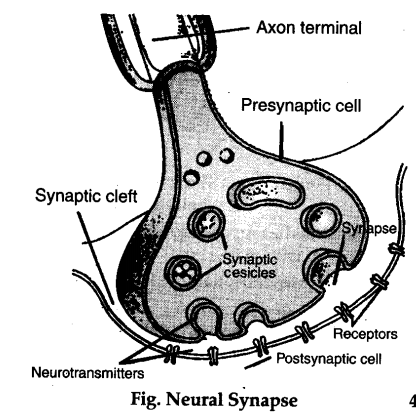The synapse is an area of functional contact between one neuron and another for the purpose of transferring information.
Structure: (a) A typical generalized synapse consists iof a bulbous expansion of a nerve terminal called a pre-synaptic knob lying close to the membrane of a jdendrite.
(b) The cytoplasm of the synaptic knob contains mitochondria, smooth endoplasmic reticulum, microfilaments and numerous synaptic vesicles.
© Each vesicle contains neurotransmitter (chemical substance) responsible for the transmission of the nerve impulse across the synapse.
(d) The membrane of the synaptic knob nearest the synapse is thickened and forms the pre synaptic membrane.
(e) The membrane of the dendrite is also thickened
and is called the post synaptic membrane. These membrane are separated by a gap, the synaptic cleft.

(f) The post synaptic membrane contains large protein molecules which act as receptor sites for neurotransmitter and numerous, channels and pores.
(g) TTie two main neurotransmitters in vertebrate nervous system are acetylcholine (ACh) and noradrenaline although other neurotransmitter also exist.